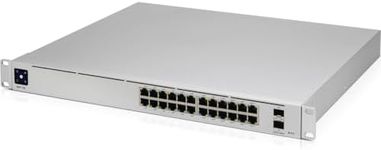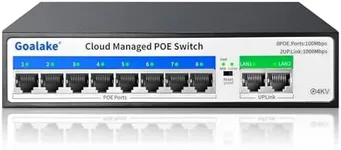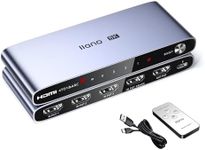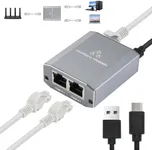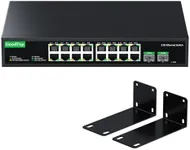Buying Guide for the Best Ethernet Switches
Choosing the right Ethernet switch for your network can significantly impact the performance and reliability of your connections. Ethernet switches are essential devices that connect multiple devices within a local area network (LAN) and manage data traffic efficiently. To select the best Ethernet switch for your needs, you should consider several key specifications that will determine how well the switch will perform in your specific environment.Port CountThe port count refers to the number of devices that can be connected to the switch. This is important because it determines the scale of your network. Ethernet switches come with varying port counts, typically ranging from 5 to 48 ports or more. For small home networks or small offices, a switch with 5 to 8 ports may suffice. For larger networks, such as in medium to large offices or enterprise environments, switches with 24 to 48 ports or more are more appropriate. Consider the number of devices you need to connect now and in the future to choose the right port count.
SpeedThe speed of an Ethernet switch indicates how fast data can be transferred between connected devices. Common speeds include Fast Ethernet (100 Mbps), Gigabit Ethernet (1 Gbps), and 10 Gigabit Ethernet (10 Gbps). The speed you need depends on the type of data traffic and the performance requirements of your network. For basic internet browsing and file sharing, Fast Ethernet may be sufficient. For more demanding applications like video streaming, online gaming, or large file transfers, Gigabit Ethernet is recommended. For very high-performance needs, such as data centers or high-traffic networks, 10 Gigabit Ethernet may be necessary.
Managed vs. UnmanagedEthernet switches can be either managed or unmanaged. Unmanaged switches are simple plug-and-play devices with no configuration options, suitable for basic networking needs. Managed switches offer advanced features like VLANs, QoS, and network monitoring, allowing for greater control and optimization of the network. If you need a straightforward solution for a small network, an unmanaged switch may be sufficient. However, for larger or more complex networks where you need to prioritize traffic, segment the network, or monitor performance, a managed switch is the better choice.
Power over Ethernet (PoE)Power over Ethernet (PoE) allows the switch to deliver power to connected devices, such as IP cameras, VoIP phones, and wireless access points, through the Ethernet cables. This is important for reducing the need for separate power supplies and simplifying installation. PoE switches come in different power levels, such as PoE (15.4W per port), PoE+ (30W per port), and PoE++ (60W or 100W per port). If you have devices that require power through the Ethernet cable, choose a switch with the appropriate PoE standard to meet their power needs.
Switching CapacitySwitching capacity, also known as bandwidth or backplane capacity, refers to the total amount of data the switch can handle at any given time. This is important for ensuring that the switch can manage all the data traffic without bottlenecks. Switching capacity is usually measured in Gbps and should be higher than the total combined speed of all ports. For example, a 24-port Gigabit switch should have a switching capacity of at least 48 Gbps. Consider the total data throughput of your network to choose a switch with adequate switching capacity.
Form FactorThe form factor of an Ethernet switch refers to its physical size and shape, which is important for installation and space considerations. Switches come in desktop, rack-mounted, and wall-mounted form factors. Desktop switches are compact and suitable for small networks with limited space. Rack-mounted switches are designed for installation in standard 19-inch racks, making them ideal for larger networks and data centers. Wall-mounted switches can be mounted on walls or other surfaces, providing flexibility in placement. Choose a form factor that fits your available space and installation preferences.








